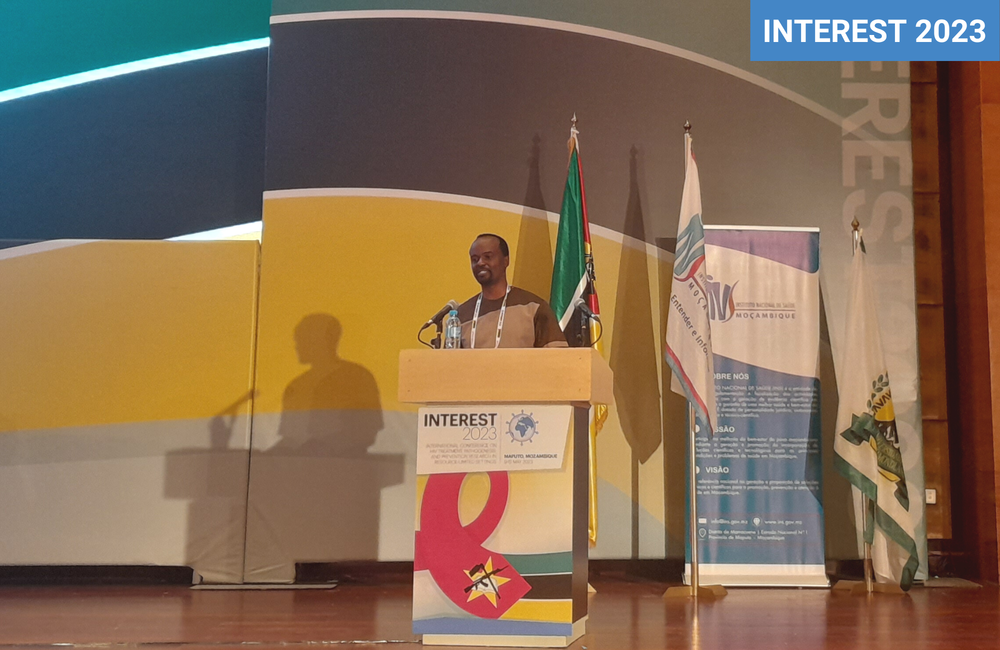
Children living with HIV are less likely to achieve sustained viral load suppression if their caregivers are younger, if their caregivers are not virally suppressed or if the children are on a protease inhibitor-based regimen, the recent INTEREST 2023 conference in Maputo, Mozambique, heard.
However, two studies from Uganda showed ways to navigate this. One study found that pairing caregivers of unsuppressed children with caregivers of those suppressed and using directly observed treatment helped children achieve viral suppression. In another study, a community-based model of care was crucial in helping children maintain viral suppression.
Dr Patrick Oyaro of LVCT Health presented the results of a study that aimed to identify factors that predict viral suppression among children up to the age of 14 living with HIV in Kenya. Viral suppression was defined as having a viral load less than 1000 on at least two tests (quarterly for point-of-care testing and biannually for laboratory testing)
Data from 668 children with HIV with a median age of 9 years and who had been on ART for a median duration of 6 years were included. Their primary caregivers were primarily women (69%), biological parents (77%), living with HIV (81%), in a partnership with another person with HIV (60%) and married (63%).
The investigators found that children over the age of six were more likely to achieve sustained viral suppression (79% and 78% among those aged 6-10 and 11- 14 years, respectively) than younger children (43%).
Children were less likely to achieve sustained viral suppression if their primary caregivers were younger (70% with caregivers aged 24-35 years vs 81% over 35 years), if their caregivers were not virally suppressed (68% vs 77% with virally suppressed caregivers), or were on a protease inhibitor-based regimen (67% vs 80% if on an NNRTI-based regimen). Other factors contributing to non-suppression included living in food-insecure households and households without electricity. All these differences were statistically significant.
However, a Ugandan study sought a solution to these challenges.
The mixed methods study was conducted among caregivers at one urban and two rural hospitals in central Uganda in 2022.
Study investigators identified caregivers of unsuppressed children and adolescents (2-15 years). They paired them with caregivers of children who were suppressed from the same area within a radius of two kilometres.
Those with suppressed children were trained as mentors in providing treatment literacy and directly observing daily treatment for two to three months. The mentors also provided linkage to livelihood support.
A total of 30 caregivers of 49 unsuppressed children were enrolled on the study. The average age of the children was nine years. Most children (77%) were on first line treatment, 21% were on second line, including 78% taking dolutegravir.
After the intervention, 46 children had a suppressed viral load, one was lost to follow-up, and two had an unsuppressed viral load with drug resistance.
The mentors identified lack of information, negligence, low treatment literacy, and lack of a supportive environment at home as the major factors that contributed to non-suppression.
Another study conducted at a rural health centre in Northern Uganda sought to suppress viral load in children under the age of 14 by offering community delivery of ART in place of visits at a health facility .
Beginning in June 2022, researchers formed groups of three to six children, based on age and location. They were attached to a community health worker who was living with HIV and a counsellor for follow-up.
The health workers provided intensified adherence counselling to caregivers. When a community visit was missed, the counsellor and community health worker made a home visit.
Viral load suppression improved from 79% in June 2022 to 81% in September and 94% in December 2022. There was also improved access to ART services and adherence.
Both Ugandan studies demonstrate that viral load suppression among children can be achieved using community models of care involving peers. There is a need to support caregiver mentors to provide peer-to-peer support at the household level, which reduces the burden on the overloaded health facilities.
Oyaro P et al. Predictors of Sustained Viral Suppression Among Children Living With HIV in Kenya: Secondary Analysis of Data From a Randomized Controlled Trial. INTEREST, Maputo, abstract 10, 2023.
Edward K et al. Effectiveness of Caregiver Mentor Directly Observed Treatment and Support Model on Viral Load Suppression in Uganda. INTEREST, Maputo, abstract 73, 2023.
Nanteza A et al. Viral Load Suppression Among Children Aged 0-14 Years Improved by Community Art Distribution in Rural Uganda. INTEREST, Maputo, abstract 299, 2023.

